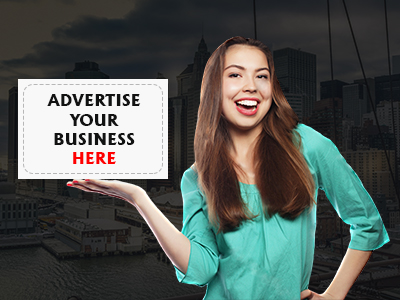Understanding Chemical Suction Hose: A Comprehensive Guide

Chemical handling in various industries necessitates specialized equipment to ensure safety, efficiency, and optimal performance. One such crucial component is the chemical suction hose—a versatile tool designed to handle the transfer of potentially hazardous chemicals safely. In this blog post, we will delve into the specifics of chemical suction hoses, their functionality, benefits, and key considerations when selecting and using them.
What is a Chemical Suction Hose?
A chemical suction hose, often referred to as a chemical transfer hose, is a flexible, reinforced hose designed to transport chemicals from one point to another, typically from a storage container or tank to an application site. It’s essential in industries like chemical manufacturing, pharmaceuticals, food processing, water treatment, and more, where the safe and efficient transfer of chemicals is paramount.
These hoses are built to resist the corrosive and abrasive properties of various chemicals, ensuring the integrity of the hose and preventing contamination during transportation. The design typically includes an inner tube that is resistant to the specific chemical being handled, reinforced by layers of material for strength, and an outer cover for protection against environmental factors.
Key Features and Components
1. Inner Tube:
The inner tube is the primary contact point with the chemical being transported. It is selected based on the chemical’s properties to ensure compatibility and resistance. Materials like EPDM (Ethylene Propylene Diene Monomer), UHMWPE (Ultra-High-Molecular-Weight Polyethylene), or PTFE (Polytetrafluoroethylene) are commonly used.
2. Reinforcement:
To provide structural integrity and prevent kinking or collapsing under pressure, chemical suction hoses are reinforced with layers of materials such as textile, wire, or a combination of both.
3. Outer Cover:
The outer cover shields the hose from external elements like sunlight, ozone, and abrasion. It enhances the hose’s durability and extends its service life.
4. End Connections:
Chemical suction hoses are fitted with various types of end connections, including cam and groove, flanges, or threaded fittings, facilitating secure connections to pumps, tanks, or other equipment.
Benefits of Chemical Suction Hoses
- Chemical Compatibility: Chemical suction hoses are designed to resist the chemical properties of the substances they handle, ensuring the safe transfer without degradation or contamination.
- Flexibility and Durability: The flexibility of these hoses allows for easy maneuverability, while their durable construction ensures a long service life even in demanding industrial environments.
- Safe Handling: By using chemical suction hoses, workers can handle chemicals from a safe distance, minimizing exposure to potentially harmful substances.
- Cost-Effectiveness: Chemical suction hoses contribute to cost-effectiveness by reducing chemical waste and ensuring efficient transfers, ultimately leading to improved operational efficiency.
Considerations When Choosing and Using Chemical Suction Hoses
- Chemical Compatibility: Select a hose that is compatible with the specific chemicals you intend to transfer. Consult with hose manufacturers or chemical compatibility charts to make an informed choice.
- Pressure and Temperature Ratings: Consider the working pressure and temperature range of the hose to ensure it can handle the conditions of your application safely.
- Proper Handling and Maintenance: Follow manufacturer guidelines for storage, handling, and maintenance to maximize the lifespan and performance of the chemical suction hose.
- Regular Inspection: Inspect the hose regularly for signs of wear, damage, or degradation. Replace any damaged components promptly to prevent potential hazards.
Conclusion
Chemical suction hoses play a critical role in the safe and efficient transfer of chemicals across various industries. Understanding their components, features, and the importance of proper selection and usage is crucial to ensure the safety of personnel, protect the environment, and optimize operational processes. Always prioritize safety, and consult with professionals or hose manufacturers when in doubt about hose selection or usage in chemical handling applications.

Ashmawi Sami has a Bachelor degree in Travel and Tourism Management from the University of Minnesota. He has his own travel vlogging channel. Besides being a fantastic yoga instructor he has travelled to 9 countries and planning his next trip soon. As the father of 3 dogs, he is well-trained in parenting, crowd control, and crisis situations.
ABOUT ME

Gillian is a freelance blogger, student, and full-time traveler. Each day she spends her time exploring something exciting to help people find the information they need while travelling to a new destination. Whether it be the place to enjoy holidays, or a spot to throw a party or hidden gems that you must visit in the city.
ALL CATEGORIES
- ! Без рубрики (1)
- Adventure (13)
- Automotive (8)
- blog (38)
- Business (2,262)
- Education (13)
- Event (4)
- Health (285)
- Insurance (11)
- KOKITOTO (6)
- Lifestyle (13)
- News (1)
- Real Estate (21)
- Shopping (27)
- Technology (24)
- Travel (7)
POPULAR POST
January 27, 2021 -
Adventure Travel For The Audacious Spirit
January 27, 2021 -
Small Business Loans for Women
January 27, 2021 -
Adventure Tours in Vanuatu
RECENT POST
February 23, 2025 -
Age of pokie island Finding Casino slot games Gamble Chronilogical age of Development Harbors
ContentPokie island: Age of Breakthrough RTP & Volatility...
February 23, 2025 -
Controls from Chance has returned which have $5,100 Incentive!
Incentive finance should be gambled 10x (basic deposit)...
February 23, 2025 -
Enjoy and Victory Cryptocurrency
Posts#4. Nuts Casino – Well-known United states of...
February 23, 2025 -
Betonline Comment 2025: Finest On-line Planet casino login casino Sportsbook Web based poker
The procedures stretch in order to Asia, thanks...








